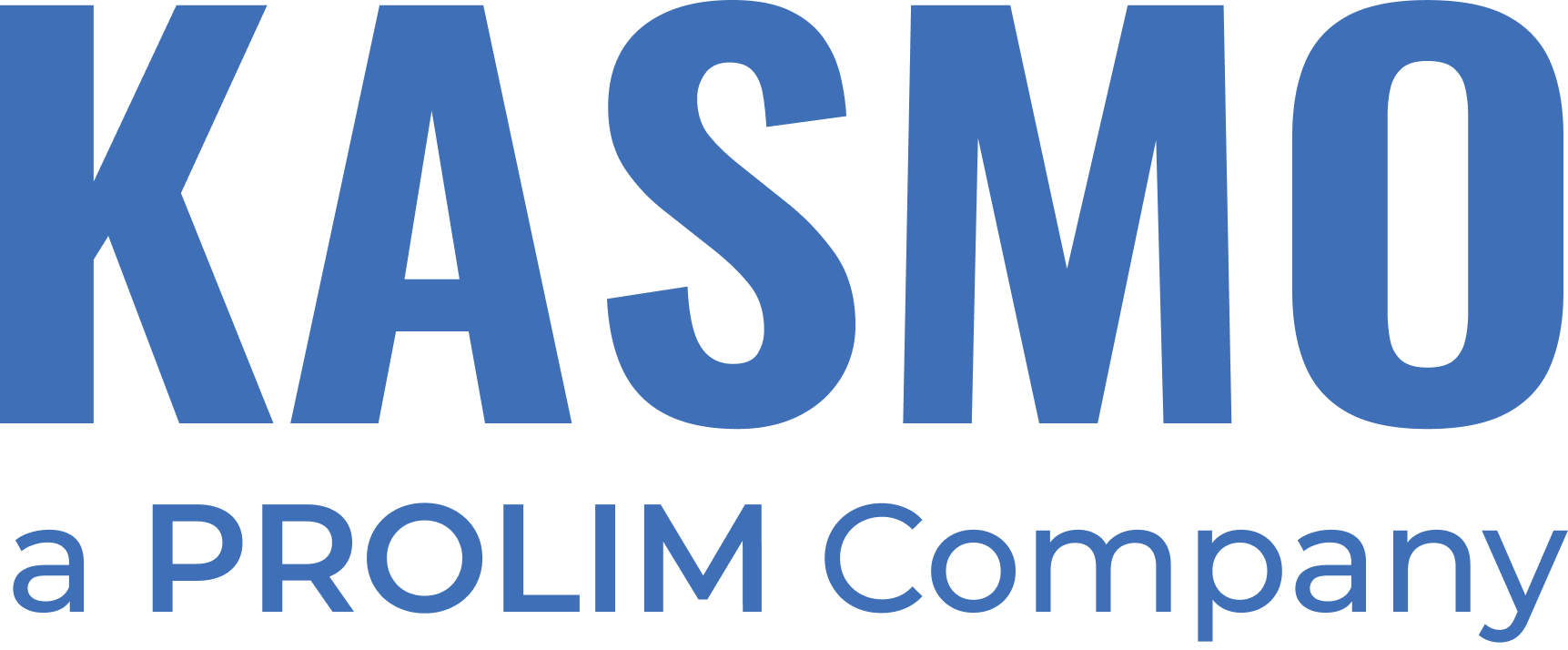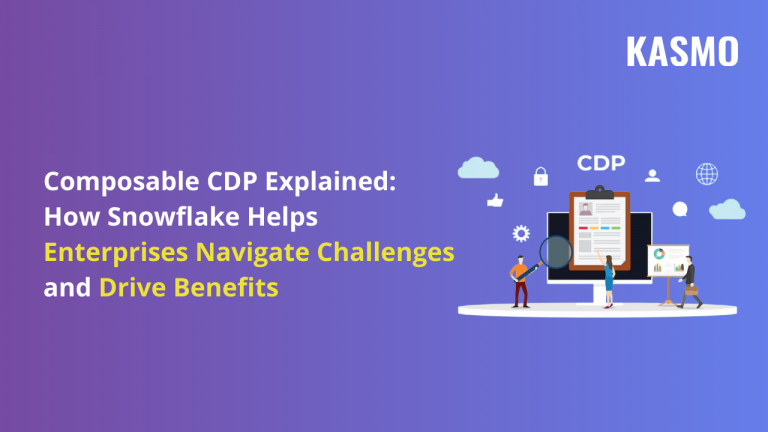Every piece of customer data holds value, and companies leverage it to gain insights into customer behavior and preferences. This data needs to be collected and managed effectively from various sources to create a unified customer view. In turn, it helps to provide a personalized experience and targeted marketing by making data accessible to other channels. This entire process is done on the software called Customer Data Platform (CDP)
The Gartner Marketing Technology Survey shows two-thirds (67%) of respondents have adopted a customer data platform (CDP). For years, companies have relied on traditional Customer Data Platforms (CDPs) to collect, store, and activate their customer data at scale. But they have realized that their rigid data models are high cost, limited scalability, and often hinder growth.
In contrast, the Composable CDP offers a modular, flexible approach, allowing businesses to tailor their data infrastructure to specific needs. This approach enables organizations to integrate best-in-class data collection, processing, and activation components, enhancing scalability and customization.
In this article, we explore in detail about composable CDP, how different it is from legacy CDP, and its working on Snowflake’s AI Data Cloud.
What is a Composable CDP?
A composable Customer Data Platform (CDP) is a modern approach to customer data management. Enterprises combining existing data infrastructure with modular tools to build their own CDP. The primary purpose of a CDP is to gain flexibility and scalability in managing customer data. This modular approach allows organizations to choose specialized tools that match their particular business needs, creating a bespoke data architecture.
A CDP is a flexible, modular solution for organizations. While traditional monolithic CDPs focus only on customer data management, composable CDPs are built with best-of-breed components (data ingestion, processing, and activation) with APIs, microservices, etc.
Difference Between Traditional CDPs and Composable CDPs

Core Components of a Composable CDP
Data Ingestion
Allows you to collect user data from different sources like websites, CRM systems, mobile apps, and other third-party apps into your warehouse. It helps to seamlessly ingest data and provides a real-time or batch flow process.
Data Storage
Storing data in a cloud data warehouse helps to gain a single customer view. It allows you to store structured, semi-structured, and unstructured data in a scalable platform. Typically, cloud data warehouses, or data lakes, are utilized for cost-effective and efficient storage.
Segmentation
Enables marketers to build real-time customer segments that can be dynamically updated based on behavioral, transactional, and demographic data. This helps marketers with precise targeting for campaigns and builds personalization tactics.
Data Activation
This step ensures data is synchronized across all the business tools used for customer communication, like CRM, ads, support, etc. Data activation is fundamental to composable CDPs as it provides a unified single view of each customer and consistent information in all channels.
What are the Benefits of a Composable CDP?

Customization
The primary benefits of CDP are customization and flexibility to tailor to specific business requirements. It leverages specific tools and integrates with best-of-breed services.
Improved Agility
Allows for quick adaptation to changes in data management by adding, updating, or swapping specific components.
Data Quality
A composable CDP can work with any type of data, seamlessly integrates with other data tools, making it simple to deploy the tools, and altogether. This does not affect the data quality, resulting in improved data insight across your organization.
Higher Efficiency
Composable CDP provides higher efficiency as it allows businesses to integrate with their existing data infrastructure. The modular approach reduces the cost by buying only the required components, thus avoiding other features present in packaged CDPs.
Security
Composable CDP avoids data duplication and enhances security. The centralized system helps to adopt security policies and GDPR and CCPA regulations to improve data governance and avoid data breaches.
Challenges Faced While Switching to a Composable CDP Approach
Integration complexity – Integrating multiple tools, including data sources, processing tools, and activation platforms, can be complicated and requires significant planning and expertise.
Data silos – When the data is split into multiple platforms without adequate planning, it makes it cumbersome to get a unified view of the customer.
Change management – Moving from a traditional view to a composable CDP view may require process changes or a shift in skills and responsibilities in the teams.
Ongoing maintenance – Regular monitoring and updates are necessary to maintain the efficiency and security of the composable CDP stack.
How a Composable CDP Works on Snowflake’s AI Data Cloud
Snowflake serves as an effective place for businesses to manage, centralize, and analyze customer data. Composable CDPs empower businesses with actionable data for marketing, operations, and sales in the Snowflake AI Data Cloud environment. It avoids moving or duplicating data into a separate system and operates directly within Snowflake’s governed, secure, and scalable system. Depending on use cases and existing data infrastructure, businesses can opt required CDP functions. Composable CDP on Snowflake’s AI Data Cloud helps businesses to –
- Create audiences and harmonize customers with their attributes to email and messaging platforms, CRMs, advertising platforms, operational tools, etc.
- Using AI decisioning, organizations can find relevant messages that compel each customer. Analyzes historic data to auto-personalize messages and recommendations.
- Examine marketing campaigns from multiple channels to provide insight, helping to generate new audience segments and campaigns.
- Consolidate data into 360-degree profiles for customers, partners, marketing teams, and other business entities.
- Gathers data from user attributes and behaviors from various sources and stores them in the Snowflake AI data cloud.
Composable CDPs Empower Marketers in Financial Services
Financial services companies have large data, but it is fragmented across various departments, restricting marketers’ access to it. So, companies can empower their marketing team with a modular approach using a composable customer data platform (CDP). It governs data and limits marketers’ access, thus diminishing the compliance risks, yet allows them to act quickly and with greater confidence using the trusted data.
- A composable CDP ensures that marketers use data ethically. They can use built-in governance in Snowflake for data usage. So, having access to data permitted by their organization enables marketers to take strategic actions.
- Several financial Institutions already have a sizable existing dataset with their schema. A composable CDP leverages your data in the existing schema on Snowflake. This helps to rapidly activate your product lines (investment accounts, customer relationships adviser, or online banking) and your organization’s unique entities while eliminating data silos.
- Financial service companies use a composable CDP with their robust AI/ML models to gain more impact. This helps marketers to set goals, strategic plans, and use AI to automatically personalize campaigns for customers, predict customer behavior, and more.
Composable CDP Empowers Healthcare and Life Sciences with Data Insights
Healthcare and life sciences companies have multiple challenges in using their sensitive customer data. Even data is scattered between different systems like payers, providers, pharmaceuticals, insurance companies, etc. So, healthcare organizations can use a composable CDP as an extension of their AI Data Cloud.
- Composable CDP is effective for healthcare and life sciences organizations as it gathers disparate data from critical sources such as Electronic Health Records (EHR), payers, wearable devices, pharmacies, and research results.
- Adhering to regulations like HIPAA means the right use of patient data. Healthcare businesses can use the Composable CDP to govern access to data. It controls data with granular access on how and what data is used.
- Companies in healthcare and life sciences have complicated data of providers, researchers, and payers, data and other related records. Legacy CDPs have a one-size-fits-all data model, while Composable CDP optimizes data according to your business needs.
Conclusion
Composable CDP has opened a new way to customer data management, providing scalability, flexibility, and customization for your data infrastructure. This platform addresses all the challenges of traditional CDP and allows for the implementation of the best-in-breed tools to deliver a personalized customer experience.
Getting started with a Composable CDP has become easier than ever before with Snowflake. It provides businesses with modern tools to manage, centralize, and analyze customer data. Allows for seamless integration of customer data into the AI Data Cloud to provide a 360-degree view to convert insight into actions. Thus, enables businesses to overcome challenges and harness the maximum potential of a composable CDP.




